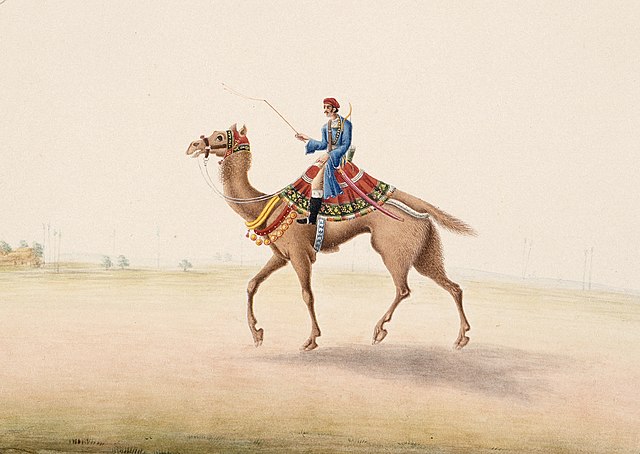Camel cavalry, or camelry, is a generic designation for armed forces using camels as a means of transportation. Sometimes warriors or soldiers of this type also fought from camel-back with spears, bows, or firearms.
Ottoman camel corps at Beersheba during the First Suez Offensive of World War I, 1915.
A Purbiya camel rider in Bihar, India in 1825
Shaffron (head defense) for a camel (Turkey, possibly 17th century)
Bedouin soldiers of the Ikhwan army in the Arabian peninsula
A camel is an even-toed ungulate in the genus Camelus that bears distinctive fatty deposits known as "humps" on its back. Camels have long been domesticated and, as livestock, they provide food and textiles. Camels are working animals especially suited to their desert habitat and are a vital means of transport for passengers and cargo. There are three surviving species of camel. The one-humped dromedary makes up 94% of the world's camel population, and the two-humped Bactrian camel makes up 6%. The wild Bactrian camel is a separate species and is now critically endangered.
Image: 07. Camel Profile, near Silverton, NSW, 07.07.2007
Image: Bactrian Camel
Camel humps store fat for when food is scarce. If a camel uses the fat, the hump will become limp and droop
A camel's thick coat is one of its many adaptations that aid it in desert-like conditions.








